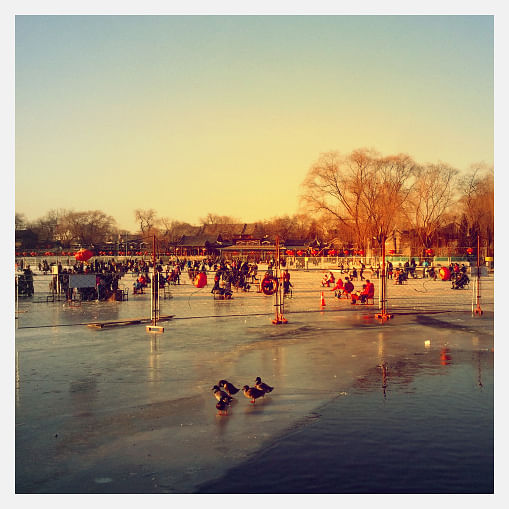
Today’s article has been inspired by the upcoming Chinese Spring Festival, the biggest event of the year for the Chinese, as well as for people from many other East-Asian countries. The country is going to take a long, relaxing break from work, resting for at least one week or even more. This is a holiday for celebration and family gatherings; in other words, it’s Christmas for the Chinese.

During the holidays, most activities include eating, conversing and playing games, but how can you forget about visiting the temples! There are many traditional venues filling the streets of China with their games, activities, folk dances and many more. Despite the Chinese lack of religion belief before the Maoist period, many Buddhism, Taoism and Confucianism traditions are still around and are well-respected.
Like Christmas lights and decorations embellish the cities’ landscape in the West, in the same way for several days before the festivities, every Chinese city gradually changes and prepares itself to welcome the New Year.

The word “red” is the most auspicious color for Chinese people; symbolizing happiness, joy and good fortune. It is perfect for the occasion since it incorporate all the things people aspire to gain in the New Year. While walking in the streets of China, it is hard to miss the red lanterns and flags hanging at every corner, paper-cuttings stuck at windows and duilian glued on doors’ sides.

Paper-cutting (in Chinese: 剪纸 jianzhi) is a Chinese traditional art with a millenary history, which in 2009 has been listed by UNESCO as “Intangible Cultural Heritage.” Thin red papers are cut by expert creating a large variety of illustrations such as animals from the Chinese zodiac, flowers, auspicious characters and idioms making them astonishingly images which are stuck on windows and walls as decoration.

Duilian (对联) are easily visible especially in smaller towns and villages. These are lines of poetry written in calligraphy on long strip of red paper which are stuck on the two sides of the house’s door and on the main beam. The lines chosen are characteristically deep and concise at the same time, and express wishes and thoughts for the New Year.

For those who are going to be spending this special time of the year in China, it is recommended to take a visit to those old parts of the city, where the “red metamorphosis” is much more evident, for example the narrow streets of Beijing’s old Hutong, or to picturesque country villages where traditions never die.

But no matter where you will be on the night of January 30th, do not forget to look up in the sky; because fireworks are something that Chinese people never live without!
Chinarchblog wish everybody a Happy Year of the Horse!
Updates about new landscape/architectural projects in Mainland China, industry news and events; info about Chinese design conferences, competitions, and seminars. Also: advice about living and working as an architect/designer in Mainland China, plus tips and info about applying for Chinese jobs. This is the Archinect version of our blog. Please visit our main blog at www.chinarchblog.com
No Comments
Block this user
Are you sure you want to block this user and hide all related comments throughout the site?
Archinect
This is your first comment on Archinect. Your comment will be visible once approved.